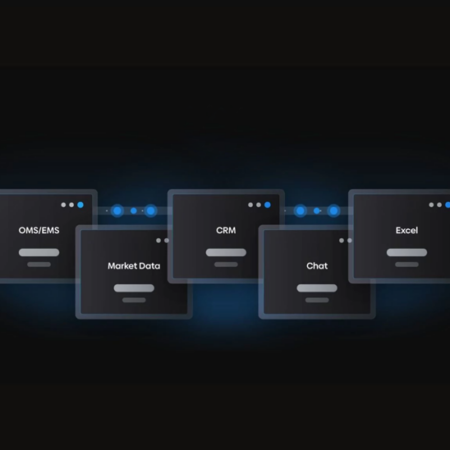The Electron project tested and successfully proved that the web stack is powerful enough to power a first-class desktop application experience. Building on top of the “chromeless” web container concept, the Desktop Integration Platform brings the Enterprise Service Bus from the server to the user’s device and unifies disparate web and desktop applications into a single, coherent user experience.
Today’s desktop operating systems are general purpose, designed decades ago in simpler times. The importance and the complexity of how users interact with IT systems has changed drastically – and technology advancements have created possibilities and demands for an environment of a next generation. This is especially noticeable in the enterprise, where the average business professional uses a multitude of web and desktop applications daily. The dominant desktop operating systems are recognizing and developing in this direction – at a slow, and responsible pace. Until then, specialized tools like Desktop Integration Platforms are becoming more and more popular.
Once implemented, a Desktop Integration Platform can become the enterprise-wide host for all applications web or locally installed. Depending on the specifics, certain platforms host only web applications, while others include (often legacy) “classic” desktop apps implemented in .NET, Java or Visual Basic. Since application development tech stacks tend to change faster, a proper Desktop Integration Platform is technology agnostic and supports the tech of today and yesterday, while being open to modifications and updates, which are inevitable in the future.
In addition to being a single access point for these apps, the Desktop Integration Platform runs a local message broker, through which participating applications can communicate with each other. This so-called interop capability enables the optimization of multi-app workflows by automatically synchronizing context and data between apps, eliminating the need of repetitive actions and copy-paste. The interop pattern enables and supports micro-frontends architecture, allowing developers to gradually upgrade existing apps by appending micro UI components interacting with the existing codebase through standard messaging protocols.
Desktop integration platform essentials: The application directory, launchpad, workspaces, and global search
When implemented correctly, the Desktop Integration Platform will become the common runtime environment for some or all apps used in the organization. From an architectural perspective, the foundational component is the App Directory – a service which lists and describes the applications which the platform should provide to the user. Usually, App Directories are connected to the authorization system, exposing different apps based on the user’s role.
The platform users access and start the entries of the application directory through a UI commonly known as the Launchpad, which acts as an alternative to the OS standard app menu. The launchpad is especially useful as an entry point for environments with multiple web applications, which users must individually discover and build/maintain a bookmark system for.
In many organizations, multi-application workflows present a challenge to the end user – as they are difficult to navigate and can cause confusion when different instances of the same application are involved. The concept of ‘Workspaces’ solves that problem by organizing multiple applications in a single window, within resizable panes and tab groups. Both users and admins can create workspaces, and, in certain conditions users can share workspaces with other users.
As the platform gains adoption and mindshare, concerns like advanced productivity come into play. At that moment, another UI pattern targeting medium to advanced users should be introduced – the global search. Recognized as an efficient interaction mechanism by platforms like Bloomberg, the search prompt box allows users to quickly access and operate on various business objects available in the platform, like clients, portfolios, instruments etc. Once located, the user can preview the match, and launch it in its application of choice.
Last Updated on September 15, 2023

